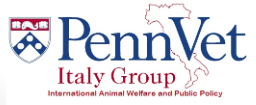Today we visited the Majella National Park, located in the Appenine mountains, in hopes to learn a little about wildlife management in Italy. The park covers about 740 square kilometers and focuses on wildlife conservation and management of a variety of animals, including the Appenine wolf, the Marsican brown bear (a subspecies of the European brown bear), and the Appenine Chamois goat.

Interestingly, and unlike national parks in the U.S., this national park houses multiple different municipalities, making animal-human coexistence and tolerance strategies a main project of the park administration. The main image of the park is the Appenine wolf, which had been endangered in the last 40-50 years. However, with conservation strategies, the population density of the wolves has now grown to be about 9 times the density of the Yellowstone National Park wolf population! Who wouldn’t want to live in a beautiful national park with endless hills and valleys, and a vast array of wildlife? Though the situation sounds ideal, there are some challenges. The park veterinarian, who was also the mayor of the area, explained to us that wolf damages to property (in this case, community sheep flocks) are prevalent, though the wild boar is responsible for the most property damages. The wild boar is actually an invasive species to Italy, originally imported for hunting, and due to extensive reproduction the species has become a problem for the national park. For this reason, the park has developed a compensation program for the members of the community who can prove that they have suffered damages from the wildlife. To aid in the compensation program, the park developed a standardized objective software for necropsy on sheep which determines the compensation for damages by the park’s wolves. Sheep owners can then decide if they would like a monetary compensation, or a replacement sheep which comes from a flock maintained by the park. In addition to the compensation program and wildlife coexistence strategies, we also learned about a variety of awesome research programs with which the park is involved. In recent years, Majella has been home to research studies on anesthesia in wild animals, animal welfare in the capture of wild animals, crime scene investigation studies involving poaching, and studies on canine parvovirus in wildlife and free-ranging dogs.

After learning about the national park, there was a demonstration of the park veterinarian’s custom designed truck, which is used for field investigations and capturing wild animals for conservation management and veterinary care. The cab was equipped with the essentials of any wildlife veterinarian – a large flashlight for working in the night, a blow gun and dart rifle, tranquilizers (a cocktail of acepromazine, medetomidine, and ketamine), a blood sampling kit, a multi-parameter monitoring system, scales, muzzles…the list goes on! The back of the truck had a cart which could be automatically raised and lowered for easy loading of carcasses for necropsy or for transfer of animals to the hospital clinic.

Later we took a short hike through the picturesque town within the park. Cobblestone streets and a beautiful stone church on the edge of the mountain made for great pictures! We then went to the famed agriturismo restaurant Tholos and enjoyed course after course of home grown and beautifully arranged foods ranging from pecorino cheese made that day, to pasta with wild boar meat sauce, lamb, ricotta filled crepes, and tiramisu! We walked off our recently consumed calories by hiking to a nearby hermitage and took in the beautiful landscapes. We’re all definitely going to miss the views once we’re back in Philadelphia! Grazie IZS for an amazing day in Italy! 





